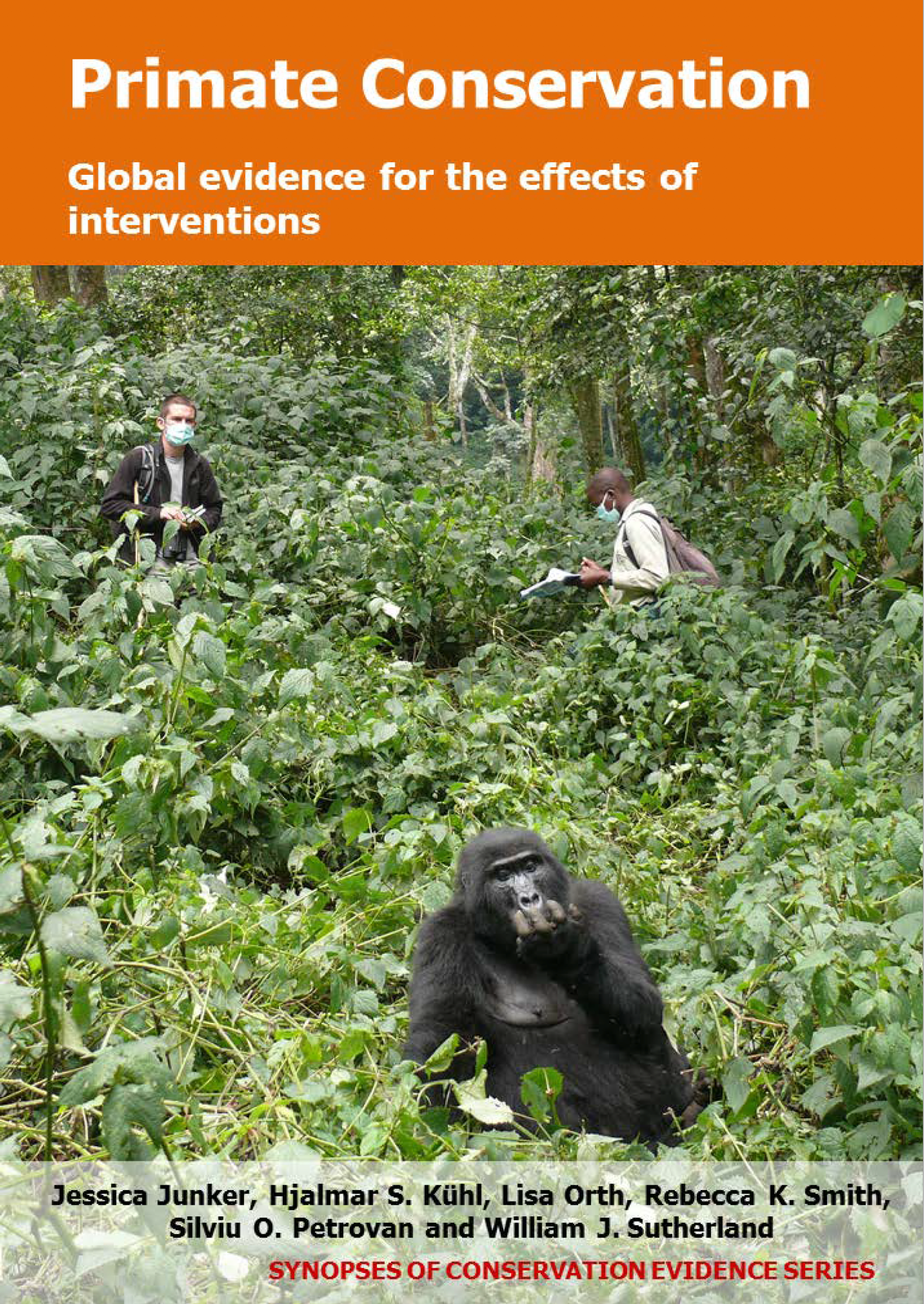Regularly disinfect clothes, boots etc.
-
Overall effectiveness category Unknown effectiveness (limited evidence)
-
Number of studies: 1
View assessment score
Hide assessment score
How is the evidence assessed?
-
Effectiveness
50% -
Certainty
10% -
Harms
0%
Study locations
Supporting evidence from individual studies
A controlled, before-and-after study in 1967-2008 in tropical forest in Volcanoes-, Mgahinga-, and Virunga National Parks in Rwanda, Uganda, and the Democratic Republic of Congo found that the habituated mountain gorilla Gorilla beringei beringei population that was regularly visited by tourists and researchers whose clothes were disinfected to avoid disease transmission along with other interventions, increased in size over time. Habituated gorillas that were regularly visited by researchers/tourists that adhere to strict hygiene rules (treatment) grew at a higher rate than unhabituated gorillas (control) (4.1% increase vs 0.7% decline/year). Overall, the habituated population increased by 168% over 41 years. No statistical tests were carried out to determine whether this increase was significant. Visitors/researchers were requested to wash their hands, wear clean clothes, and wash their shoes before entering the forest. As part of the ecotourism- and research programmes, gorillas were habituated to human presence, where visitors/researchers had to follow strict health procedures; these included keeping a safety distance to the gorillas, wearing face-masks, ensuring that visitors/researchers were healthy, and spending a limited amount of time with gorilla groups. The population was continuously monitored by vets and gorillas received medical treatment if necessary. When gorillas died, their cause of death was examined. The study only tests for the effect of veterinary interventions, but does not distinguish between the effects of the other interventions mentioned above.
Study and other actions tested
Where has this evidence come from?
List of journals searched by synopsis
All the journals searched for all synopses
This Action forms part of the Action Synopsis:
Primate Conservation
Primate Conservation - Published 2017
Primate Synopsis





)_2023.JPG)














